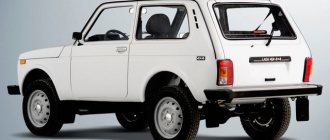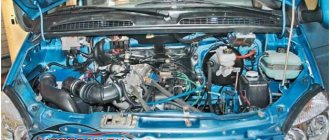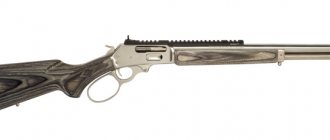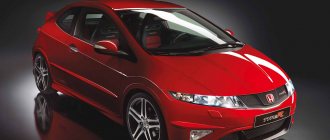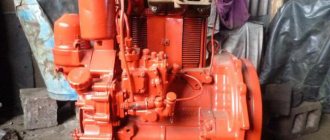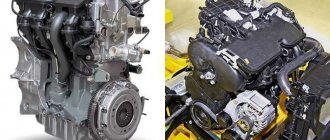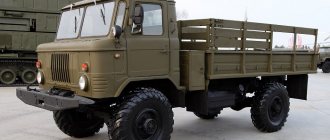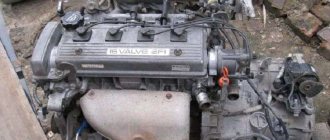First generation 1996-2001 RF1-RF2
In 1995, the Honda StepWGN minibus was presented at the Tokyo Motor Show. Honda consciously moved towards building a family car; in 1994 it released the CRV, in 1995 the Honda Odyssey, and in 1996 the Stepwagon began to be produced. The machine concept is functionality, performance and reliability.
The Stepwagon can accommodate both 5 and 8 passengers. A low floor with a high roof made the car comfortable and spacious. At that time, Japanese cars of this class had engines under the driver’s seat, but Honda began installing the engine using a classic layout, which helped reduce the price.
To reduce costs, one single choice of engine and gearbox was offered. This is an ultra-reliable 2-liter B20B, complemented by a 4-speed automatic transmission.
The Honda Stepwagon has a front-wheel drive and all-wheel drive, all-wheel drive like on a Honda Partner, works with the DPS system (a system with 2 pumps), the principle of its operation was that by default the torque was transmitted to the front wheels, but if they could not cope, then the torque was also transmitted to the rear ones.
The chassis of the StepWGN is quite interesting, with a MacPherson strut at the front and a multi-link suspension at the rear. In subsequent years, many Honda vehicles had the same design.
The Honda Stepwagon was a success in the Japanese market, and improvements were not long in coming. A year later, ABS and two airbags were standard, and many other useful features were added.
The seats recline comfortably and you can stay overnight quite comfortably
The seats can be assembled and the volume of the luggage compartment will increase
In 1997, ABS stability control and two SRS airbags were included, and many features were added.
In 1999, a deep restyling took place, the “face” changed, the bumpers and headlights were replaced. The unit became more powerful by 10 horsepower and produced 135 hp.
There was also a rare version of the Honda Stepwgn with a tent (with a folding roof), you can get into the tent from the cabin through a hatch, there are 2 of them.
In 2001, production of the model ceased.
Specifications
• Manufacturer: Honda • Production: 1996 – 2001 • Drive: front and 4WD • Transmission: 4-speed automatic • Unit: B20B, 125 hp 184 Hm • Length: 4,705 • Width: 1, 695 • Height: 1, 815 • Wheelbase: • Curb weight: 1410-1645 kg (dimensions in mm)
Price
Prices for a minivan start from 280 thousand rubles and can reach up to 400 thousand rubles. The engine and gearbox are quite reliable units; when purchasing, you should pay attention to the body, especially the arches. Spare parts are mainly purchased under contract, since the car was not officially delivered to Russia, and besides Japan, the Stepwagon was not officially sold anywhere and therefore there is no analogue with left-hand drive.
Photo taken from the portal Drom.ru
Maintenance tips and technical regulations
Maintenance tips and technical regulations are taken from the website Hondavodam.ru
• It is advisable to change the engine oil before 10,000 km. mileage (includes 4 liters) • Change the gearbox oil every 40,000 km, it goes there - ATF DW-1 (from 2.5-3.2 liters) • Power steering fluid - PSF, about 1 liter. • Fluid in the rear gearbox (only for 4WD configuration) - DPSF, more than one liter. • To replace antifreeze you will need a little more than 4 liters, for a partial replacement - less than 4 liters. Replacement interval: once every 2-3 years. • Spark plugs are changed every 20,000 km. • Timing belt: belt life 100,000 • Timing tensioner roller: 100,000 • Crankshaft face oil seal: 100,000 • Second camshaft oil seal: 100,000
(Use original Honda fluids; service regulations are taken from the website Hondavodam.ru)
Second generation Honda Stepwgn 2001-2005 RF3, RF4, RF5, RF6, RF7
The first generation of Honda StepWGN became a market bestseller and, accordingly, an immediate continuation of the model was needed, so in 2001, after the production of the first generation ceased, the second generation began to be produced.
The developers faced a difficult task; they had to improve an already good model. Passenger minibuses are popular in Japan and competition in this class is fierce. But for Honda engineers, the more complex, the more interesting, and they are developing the Stepwagon to be superior to its predecessor, and even more so to its competitors.
The first thing you need to pay attention to is the new unit, which “bears” the K20A index. It has the same volume as the B20B on the previous Stepwagon, but if you look at the characteristics (160 hp instead of the previous 125 hp), it is clear that this is still a different engine.
Instead of a timing belt, it has a chain; they began to install “intelligent VTEC” (i-vtec) on it. This system helped reduce fuel consumption in civilian cars (for Stepwgn it is 7.7 liters per 100 km/h, this is the best figure in the class), and in sports cars of the brand, it was able to extract power of more than 200 hp from two-liter engines.
Since 2003, a 2.4-liter unit was added to the range of engines, but this did not affect the maximum power; it produced 2 hp more, but added 30 Hm of torque. The gearbox was changed, instead of 4 steps it became 5.
They didn’t touch the chassis, they left the MacPherson strut at the front and the multi-link at the rear. The drive, just like the first Stepwagon, remains front and all-wheel drive, 4WD with a 2-pump system (DPS).
The exterior has changed, the body shape has become rounded and smooth. Like its predecessor, there was only one door to the rear compartment (sliding), in rich trim levels the door was electrically driven.
There is a Spada package, which is distinguished by headlights and a radiator grille. As we have already said, there is stiff competition in this class and to be the best among minibuses, you need to have a functional and spacious interior. Honda with its Stepwagon succeeded in this 100%.
Only excellent materials were used, expensive fabric and plastic. Seat adjustment was carried out in very large ranges.
In 2003, the Stepwagon was restyled, the headlights and bumpers were changed, and, as already mentioned, a new K24A unit was added.
The second generation turned out to be simply excellent; the engineers managed to transfer the best from the previous model and correct the shortcomings of the previous model. Interestingly, during the second generation, Honda produces another minibus, but for wealthier and more demanding customers, this is the Honda Elysion.
Specifications
• Manufacturer: Honda • Production: 2001 – 2005 • Drive: front and 4WD • Transmission: 5-speed automatic classic type • Engine: K20A, 160 hp 6500 rpm 195 Hm 4000 rpm, • Engine: K24A , 162 hp 6000 rpm 224 Hm 3600 rpm, • Length: 4,680 • Width: 1,725 • Height: 1,845 • Ground clearance: 160 • Wheelbase: 2805 • Fuel consumption: 7.7 l per 100 km /h in the combined cycle • Curb weight: 1600 kg (dimensions in mm)
Service
Maintenance tips and intervals are taken from the website Hondavodam.ru
• It is advisable to change the engine oil before 10,000 km. mileage (includes 4 liters) • Change the gearbox oil every 40,000 km, it goes there - ATF DW-1 (from 2.5-3.2 liters) • Power steering fluid - PSF, about 1 liter. • Fluid in the rear gearbox (only for 4WD configuration) - DPSF, more than one liter. • To replace antifreeze you will need a little more than 4 liters, for a partial replacement - less than 4 liters. Replacement interval: once every 2-3 years. • Spark plugs are changed every 20,000 km • Valve adjustment: 40,000 km
(All fluids must be original “Honda”, regulations are taken from the website Hondavodam.ru)
Video
You can enjoy video reviews of Honda StepWGN
Hondavodam.ru - Honda StepWGN. Honda StepWagon. RF3-RF8
Honda StepWGN RF3-RF8
The second generation of Honda StepWGN (Honda StepWagon) turned out to be extremely diverse and enjoyable. Honda engineers
Once again in the history of the company, the task was to make a good car even better, without losing consumer interest, and preferably unattainable for competitors. Needless to say, everything turned out perfect with the Honda StepWGN.
The car first received one new engine, the same in volume as the previous one - instead of the B20B there was a place under the hood
took K20A. Despite the same volume, operating scheme, and, most importantly, the technical characteristics of these two engines differed like heaven and earth. Firstly, the new engine, unlike all previous Honda engines, rotated clockwise. Honda said goodbye to its main distinctive feature, which was an unpleasant surprise for many unprepared craftsmen, as well as a reason for pride among brand lovers. Counterclockwise rotation never gave any special advantages, but Honda drivers always had a reason to emphasize the exclusivity of their own choice. Now Honda has become “like everyone else.”
The second innovation was the replacement of the timing drive from a belt drive to a chain drive. This slightly reduced the number of developed revolutions (but this did not affect “civilian” devices, which include StepWGN), but the resource of the node itself increased significantly. If previously it was necessary to disturb the unit every 100,000 km (which is already an excellent indicator, unattainable for many automakers today), then after replacing it with a chain, the resource began to work for 200,000 km, and sometimes even more, without any problems.
It will be useful: Test drive Mercedes Benz Sprinter
The third positive feature of the engine replacement was a significant increase in power and torque.
at the same volume. Now the power is 160 hp. (versus 125 in the first body), and the torque became 195 N.m. (vs. 185 N.m.).
The fourth advantage was the appearance in the engine of the most modern i-VTEC variable valve timing system. The letter “i” in the abbreviation meant “intellectual”. Now the VTEC system affected the engine's performance from the moment it was started, improving its economy (at low speeds) or adding power (at high speeds). It is worth noting that it was starting with the K20A engines that Honda designers learned to forcibly separate two different VTEC operating modes. One type of i-VTEC made it possible to achieve fantastic efficiency (in particular, fuel consumption
the StepWGN has 7.7 liters per 100 km, considered the best in its class), the other, on the contrary, allowed the engine to produce an incredible 220 hp. from a two-liter volume, without the use of any superchargers or special devices! Of course, these delights were mutually exclusive - economical cars were not particularly powerful (although 160 hp StepWGN was quite enough!), and powerful cars “flew” past the economy class. However, it is worth noting that powerful varieties of K20A have never been installed on StepWGN. The only “upgrade” regarding engines can be considered the appearance in 2004 of the Stepa with a 2.4 liter K24A engine. The increase in volume did not give a significant increase in power - 162 hp. (was 160), but gave a significant increase in torque - 224 N.m. versus 195 for K20A.
The transmission was also rebuilt. From now on, it became a five-speed transmission, but remained automatic, of the classic type. Options with a manual transmission were not even considered, and developments with a CVT were implemented only in the next version of the car.
The suspension layout - MacPherson strut in front, multi-link system in rear - was left virtually unchanged from the first body. Of course, the shapes and designs of the levers and racks have changed, but the principle itself remains.
Just like StepWGN in the first generation, the second generation received front-wheel drive and all-wheel drive
, and also plug-in all-wheel drive worked thanks to the DPS system.
Appearance
The car has become more refined. If the first generation StepWGN was a classic “parallelepiped with a hood”, then the second generation received the rounded shapes of this parallelepiped, as well as more interesting optics at the front and rear. Just like the first generation, it was possible to get into the car thanks to only three doors, the front two swung open traditionally, and the door to the rear of the cabin was sliding. In the most expensive trim levels, this door had an electric drive. The rear trunk door was a huge lift-up hatch that occupied almost the entire rear of the car.
The interior of the car was finished with the utmost care - high-quality fabric and expensive plastic were used as materials. The middle row of seats was swivel - passengers in the middle row could move while looking at the oncoming road, or, on the contrary, they could turn the seats towards the passengers in the third row and have, for example, a meeting.
In 2003, the model range was expanded, although the generation remained the same. Thus, larger externally bodies appeared with the designations RF5, RF6, RF7 and RF8. The first two body types received only external changes, while maintaining the general concept. The RF7-RF8 received a new engine under the hood, the K24A, which we discussed above.
HONDA STEPWAGON 2.0
Description
: HONDA STEPWAGON 4WD FULL TIME MOTOR 2.0 8 LUGARES 94.000KM A VENDA NA WWW.MISTERMOTOS.NET
In general, the second generation of Honda StepWGN turned out to be much better than the first. This doesn’t happen often for Honda, for the second generation to become more interesting than the original without seriously reworking the concept. Here we managed to make a continuation of the successful series, while
continuity.
Third generation RG1, RG2, RG3,RG4 2005-2009
In 2005, the third generation of Honda StepWGN was released, externally “Styopa” changed beyond recognition, he became completely different. Unlike previous cars, which had one sliding door, the new model has two, like its main competitors Nissan Serena and Toyota Estima.
The Honda Stepwagon is built on a new platform, thanks to which the car has become narrower, but the main thing is that the space in the cabin remains the same. It became shorter in length. Multi-link suspension at the rear and beam at the front. Front-wheel drive and 4WD.
The Stepwagon has a 40 mm lower center of gravity, which allows for a low floor, which improves cornering control and stability at high speeds.
The unit was borrowed from its predecessor, these were K20A and K24A, the 2-liter version produced 155 hp, and 2.4 liters. 162 hp, the difference in “horses” is not particularly noticeable, but the older one has 30 Nm more torque.
When choosing a gearbox, customers have a choice: a variator has been added to the classic “automatic”, the variator is only available on front-wheel drive versions, and 4WD is equipped with an automatic transmission.
Like previous models, the Honda Stepwagon in the RG1 body was a great success in the Japanese market, and people in the CIS still don’t mind driving it. In just a year after the premiere, sales amounted to 10 million units! In 2009, production was discontinued.
Below are photos of the interior:
Specifications
• Manufacturer: Honda • Production: 2005 – 2009 • Drive: front-wheel drive and all-wheel drive • Transmission: 5-speed automatic classic type, CVT for front-wheel drive versions • Engine: K20A, 155 hp 6500 rpm 195 Hm 4000 rpm. min, • Engine: K24A, 162 hp 6000 rpm 224 Hm 3600 rpm, • Length: 4,630 • Width: 1,695 • Height: 1,770 • Ground clearance: 155 • Wheelbase: 2855 • Fuel consumption per 100 km: 8.3 l in the combined cycle • Curb weight: 1540-1630 kg (dimensions are indicated in mm) (You can look at the service in the previous generation, the engines are the same)
Price
Prices for a Honda Stepwagon in the RG body start from 500 thousand rubles and reach 750 thousand rubles. The car was not sold anywhere except in Japan and therefore an analogue with left-hand drive cannot be found.
Honda Stepwagon Spada RP1: problems with the L15B Turbo engine (1.5 l) Honda Stepwgn minibus right-hand drive
Now I travel in a private carriage
